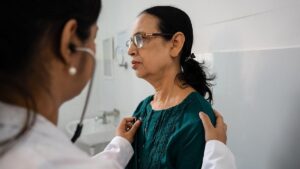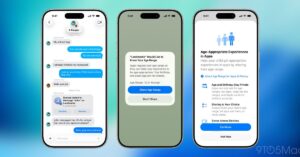SAN FRANCISCO – A groundbreaking collaboration between Oura Ring and Dexcom’s Stelo offers new insights into blood sugar management for non-diabetics.
In a significant advancement in health technology, the Oura Ring, known for tracking sleep and stress, now provides users with the ability to monitor blood sugar levels. This development comes through a partnership with Dexcom’s Stelo, a continuous glucose monitor (CGM) designed for individuals without diabetes. The goal is to help everyday users understand how their dietary habits affect their blood sugar and overall health.
Immediate Impact
The integration of Stelo data with Oura’s existing metrics empowers users to grasp the cause-and-effect relationships between their eating patterns and various health factors such as energy, mood, and recovery. As Maz Brumand, vice president of product for Oura, told CNET, “We’re empowering members to make sustainable, science-backed lifestyle changes.”
Key Details Emerge
Over a two-week test period, the Stelo CGM paired with the Oura Ring revealed surprising insights into daily habits. This type of biofeedback proves valuable not only for diabetics but for anyone interested in optimizing their health.
Understanding Continuous Glucose Monitoring
Continuous glucose monitoring provides a real-time window into metabolic health, a crucial factor in how we feel daily. According to the Cleveland Clinic, glucose is the main energy source for the body, influencing everything from muscle function to mood stabilization.
“Glucose is a real-time window into metabolic health, which underpins how we feel day to day — our energy, focus, mood, and sleep — and how resilient we are over time,” Brumand says.
Industry Response
Wearable glucose sensors like Stelo are gaining traction, offering non-diabetics insights into their dietary impacts without the need for finger pricks or prescriptions. This accessibility marks a shift in how individuals can manage their health proactively.
By the Numbers
Understanding what constitutes a ‘normal’ glucose range is essential. The American Diabetes Association suggests a target range of 70 to 140mg/dL for adults without diabetes. Spikes above this range are normal after meals but should resolve quickly.
“Clinical studies show that even in healthy individuals, a moderate glucose spike (rise above 140mg/dL) can occur on a daily basis,” says Renee Fitton, a registered dietitian.
Expert Analysis
Fitton explains that the frequency and magnitude of glucose spikes depend on various factors, including diet, stress, and physical activity. The Oura Ring’s data can help users identify patterns and make informed dietary choices.
What Comes Next
As more individuals adopt this technology, the potential for personalized health insights grows. Users can order the Stelo sensor directly from Oura, with each sensor tracking glucose levels continuously for up to 15 days.
Background Context
Continuous glucose monitoring has traditionally been a tool for diabetics, but its expansion to a broader audience reflects a growing interest in preventive health care. The ability to see real-time data on how food affects glucose levels encourages healthier eating habits.
Future Implications
The integration of CGMs with wearable devices like the Oura Ring represents a significant shift in personal health management. As technology advances, the potential for more comprehensive health insights and interventions increases, paving the way for more proactive health management strategies.
In conclusion, the collaboration between Oura Ring and Dexcom’s Stelo offers a new frontier in health monitoring, providing valuable insights that could lead to better long-term health outcomes for many.







